Best indoor cycling shoes 2025: breathable and gym-friendly shoes for pedalling inside
Whether it's your home set-up, a gym-based session or the best shoes for Peloton, here are our top-rated picks of the best shoes for indoor riding
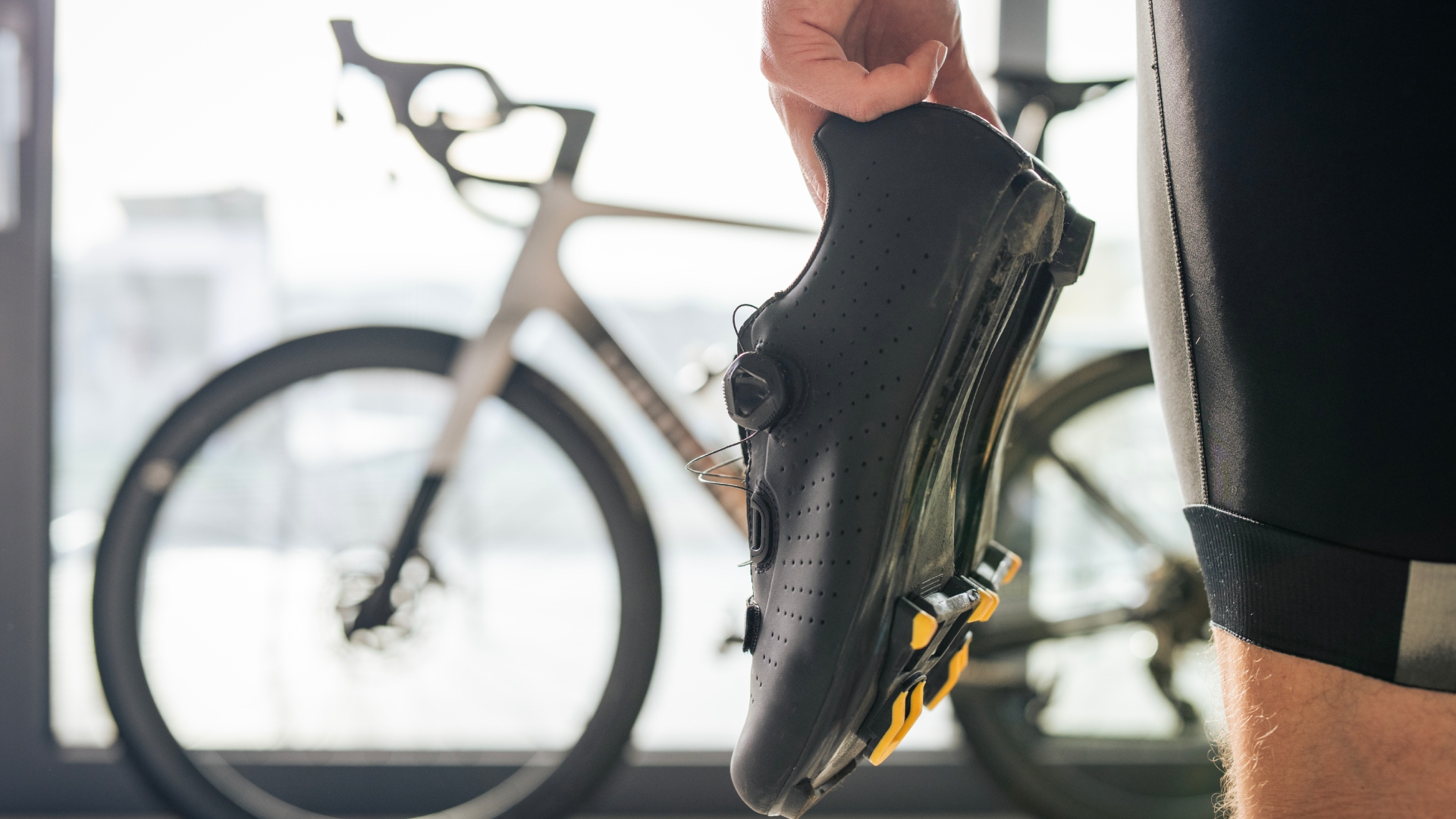
Let's get straight to the point: you don't need the best indoor cycling shoes to cycle indoors. However, with the growth of indoor cycling, racing and at-home fitness, there is a growing demand for kit that meets the needs of riding indoors.
Along with the best indoor cycling clothing, indoor cycling footwear can make a big difference to your comfort and efficiency when riding indoors. Why is that, you ask?
The biggest difference to outdoor cycling is heat management and the dispersion or wicking of sweat, due to the increase in temperatures generally compared to outdoor riding. Transferring this to indoor cycling shoes, they typically offer increased ventilation and a more minimalist design. In the case of the best shoes for Peloton and indoor cycling, they can also be a bit stiffer in comparison to the best cycling shoes, which need to offer more comfort and compliance. This allows for better power transfer and efficiency, maximising your effort.
The best indoor cycling shoes also need to be kinder on floors, firstly to not damage expensive gym or parquet floors, but also these floors tend to be polished. Hence, they need to offer increased grip, typically with soft rubber buffers keeping you upright on the walk from the bedroom or changing room to your class and bike. Shoes like our best overall Shimano SH-IC501 embody all of these attributes, which is why it has been awarded our highest honour.
You don't need one of the best exercise bikes or a gym membership to enjoy indoor cycling. You can get started with your bike and one of the best smart trainers linked to one of the best indoor training apps.
The quick list
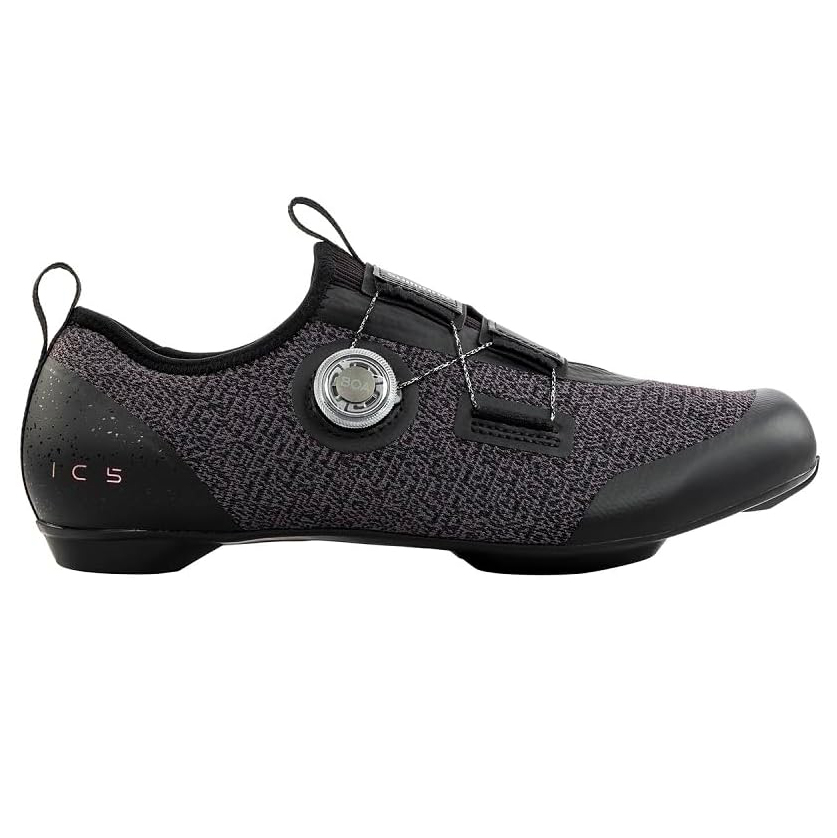
If you could list all you wanted on an indoor shoe, the Shimano SH-IC501 probably has it. It performs well on the bike, is lightweight and comfortable, sleek and stylish, has anti-odour fabric and a sole with plenty of grip on gym floors.
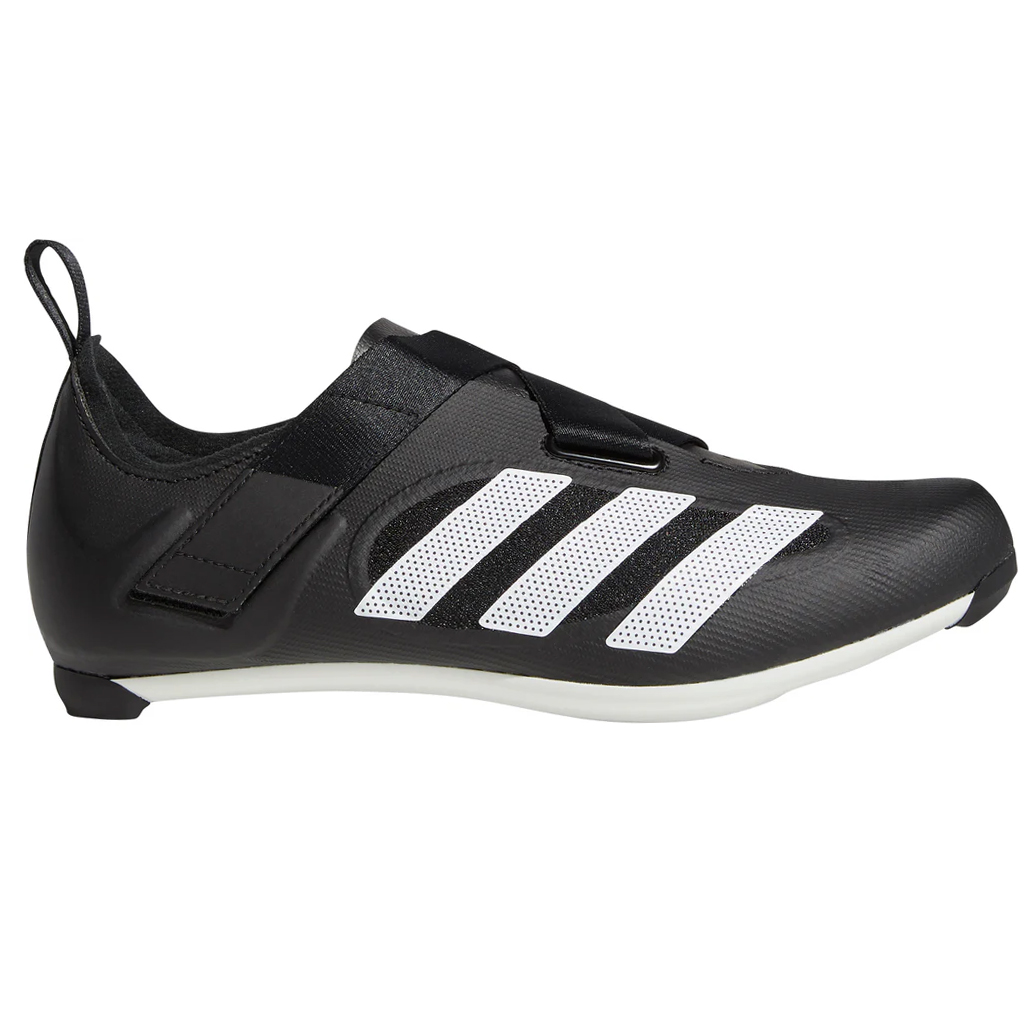
High on style and high on performance, the Adidas Indoor Shoe keeps the features simple to maximise pedalling efficiency and on-the-bike performance as indoor cycling should.
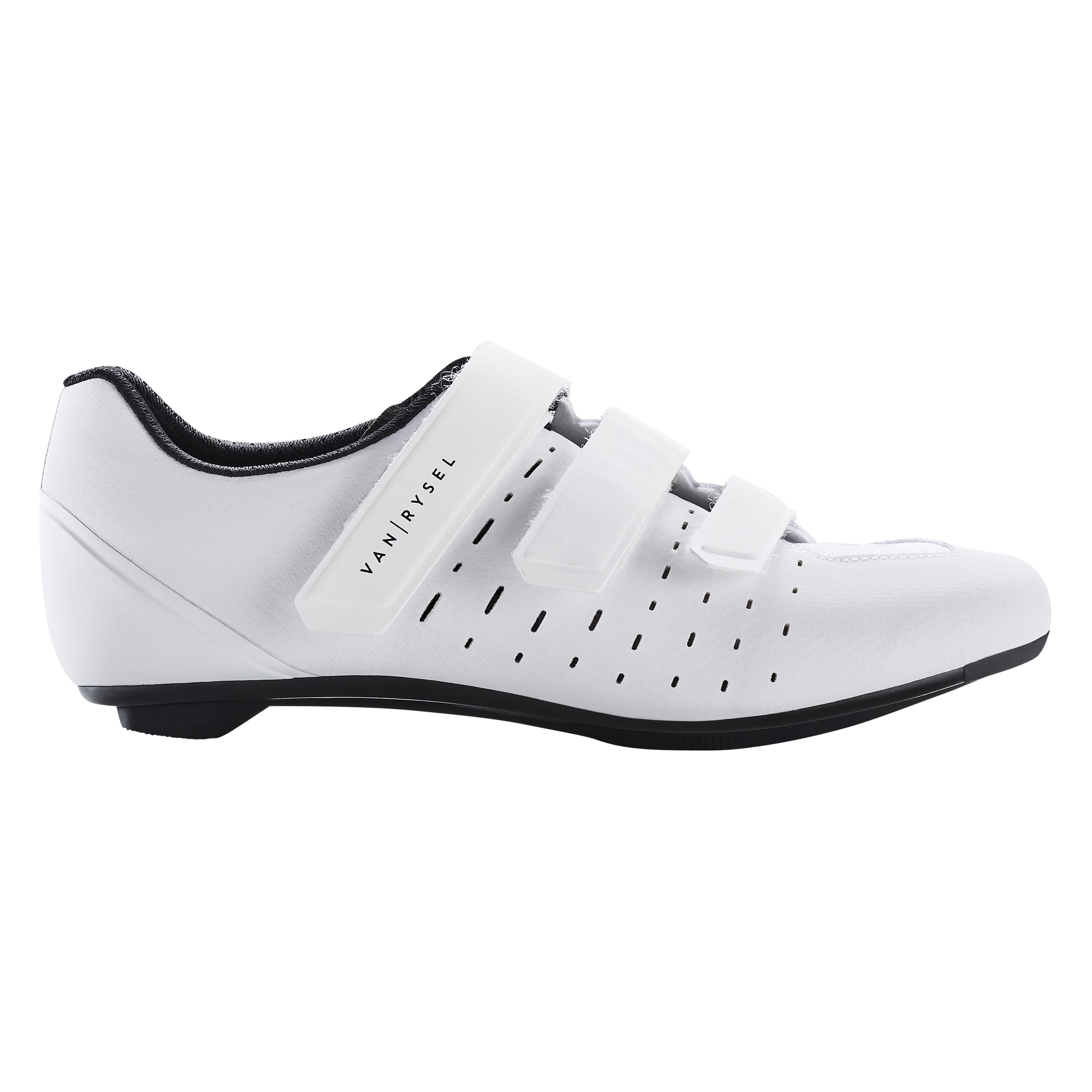
If you're struggling to justify the expense of indoor-specific shoes, then the Van Rysel is a great option. Although it's not specifically designed for indoor use, it has a dual cleat option and offers enough flex and grip to walk from the changing rooms.

The SuperRep has a really roomy, soft and cushioned upper, which makes it a great option if you have wider feet, particularly if you're not used to the constraints of a cycling shoe.
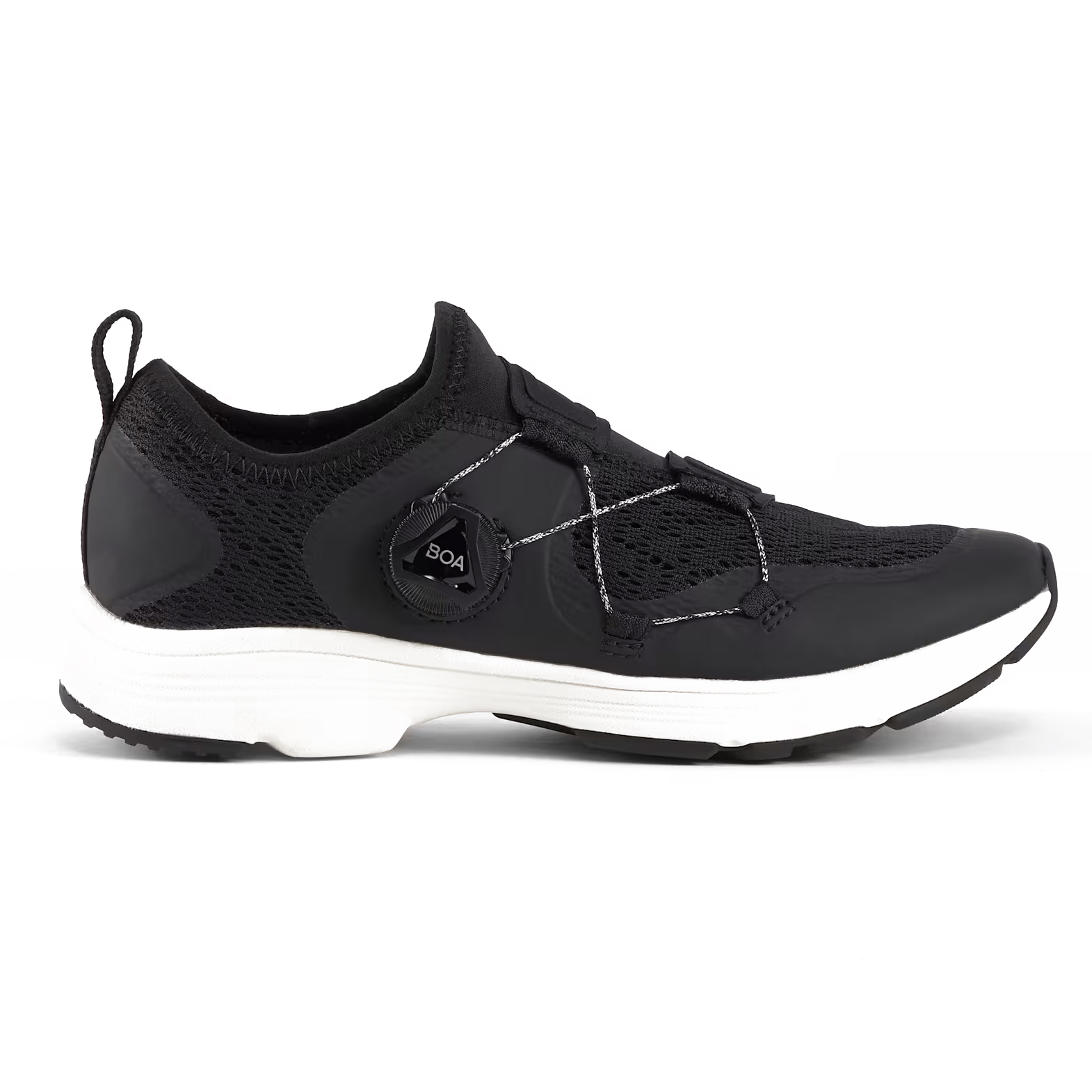
Is it a cross trainer, or is it a bike shoe? The Bontrager Cadence does a bit of both, so it is a great option if you don't want to take two pairs of shoes to the gym.

Although the Torch's aren't specifically designed for indoor use, they offer plenty of ventilation and sufficient grip on the sole, making them very effective. And when the summer months come, you can head outside in them too.
Best indoor cycling shoes as tested by Cycling Weekly
Best overall indoor cycling shoes
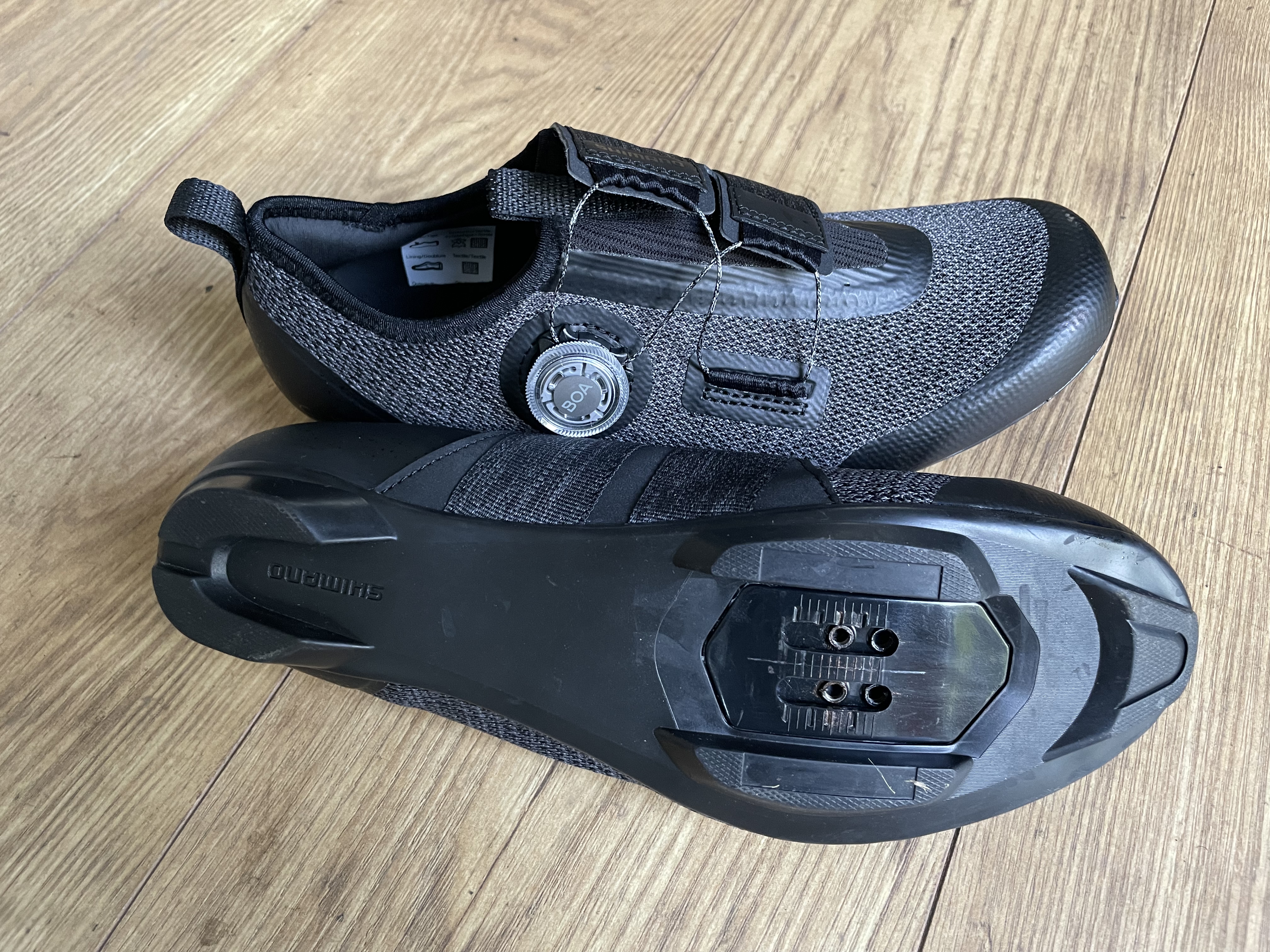
Shimano SH-IC501 Indoor Cycling Shoes
1. Shimano SH-IC501 Indoor Cycling Shoe
Our expert review:
Specifications
Reasons to buy
Reasons to avoid
The Shimano SH-IC501 is an indoor shoe with a two-bolt cleat, ideal for gravel or MTB riders who use this system or those who want the additional comfort of using a SPD cleat on the gym spin bike or their own Peloton.
Of all the indoor shoes I've tested, the Shimano IC501 was the most slipper-like: lightweight and comfortable with a grippy and flexible sole. The anti-odor fabric was a blessing to the contents of my gym bag after particularly sweaty workouts. Available in a large range of sizes as well as both men’s and women’s fits, I personally found these close to a perfect fit, proving exceptionally comfortable when on and riding.
The flexible fabric sock-like upper with a single crisscross Velcro strap makes it easy to put on. The grippy rubber flexible sole and recessed metal cleat are great for walking and, therefore, ideal for a gym bike option.
On the downside, the flex did mean that I didn't get the greatest power transfer to the pedals; this will matter more to some than others, notably cyclists who are diligently measuring the watts or keen on e-racing. There’s also a risk that the combination of the less rigid sole and smaller cleat (compared to a three-bolt road cleat) could cause discomfort during longer sessions. I found this started to creep in on longer sessions of more than two hours.
For those using road pedals, Shimano don’t have an equivalent three-bolt shoe although many of the features of the IC501 also appear on the cheaper IC100 which has both two and three-bolt fittings.
Best for performance in the gym

Adidas The Indoor Shoes
2. Adidas The Indoor Shoe
Our expert review:
Specifications
Reasons to buy
Reasons to avoid
The Adidas Indoor Shoe is a bit different from the other dedicated indoor shoes in our guide. It’s scaled down, sleek, and stylish without any extra cushioning, tabs, or other bells and whistles, although, depending on your colourway of choice, the vibrancy of the shoes does all the talking.
Designed for a three-bolt cleat, these clearly have a more road-to-indoor cycling crossover. Once my foot was on the pedals, the Adidas felt the closest riding in road shoes. The sole was stiff, and I really appreciated the large cleat optimising power transfer. Although, if you’re new to cycling shoes, you might be surprised by the lack of padding.
Because there’s just a single Velcro strap, the fit is less adjustable than in other indoor cycling shoes I've tested. Even with the built-in heel grips, slimmer heels can lift out (more so when walking off the bike). I also noticed where the strap lay across my foot, making me feel uncomfortable after a while if it was really pulled in tight.
The stiff sole and prominent cleat make The Indoor Shoe difficult to walk in, and you definitely won't be able to cross-train in them. These shoes prioritise pedalling performance above gym cross-over.
Best for budget

3. Van Rysel Road Cycling Shoes Road 100
Our expert review:
Specifications
Reasons to buy
Reasons to avoid
The 100 isn’t an indoor-specific shoe but it is very well priced and allows riders to choose between cleat systems (two or three bolt), so a great option for those new to cycling shoes or those who don’t want to spend a lot for a shoe they use once a week at the gym.
On the bike, the Van Rysel shoes perform well. They're not the stiffest shoes out there, but they did a perfectly good job transferring my effort to the pedal without any notable hotspots. The three basic Velcro straps give plenty of adjustment, although if you have narrow feet, like me, you might find it harder to get a good fit compared to a more expensive BOA dial fastening.
The sole doesn’t offer much grip when walking, so they’re best put on next to the bike. This is particularly the case if you use a bare-metal two-bolt cleat as the mount isn’t recessed in the sole’s grips as it would be on a two-bolt specific shoe.
When set up for a three-bolt cleat, we found it can overhang the edges of the sole when mounted further back. It's not a big problem for riding indoors, but if you start to use them for riding outdoors, it could become a shelf for muck and grime.
Best for wide feet

Nike SuperRep Cycle 2 Next Nature
4. Nike SuperRep Cycle 2 Next Nature Women's shoe
Our expert review:
Specifications
Reasons to buy
Reasons to avoid
The Nike SuperRep Cycle 2 Next Nature Women's shoe offers a little bit of everything. It takes either a two- or three-bolt cleat, so it is good for a range of riding experiences. The nylon-reinforced forefoot sole has a mid-foot flex, and compared to other indoor shoes I've ridden, these have a lot of ventilation, which is ideal for hot indoor riding.
On test, I found the shoe quite wide-fitting, a feature enhanced by the soft padded material of the upper, which allows a little more give than the more minimalist design of shoes like the Adidas Indoor Shoes. As someone with narrow feet, I did that. The zig-zag Velcro strap didn't hold my foot quite securely enough, mostly due to this extra-soft upper.
The shoe performs well enough at even-paced efforts, but the mid-foot flex does compromise harder pedaling efforts. Ideally, this flex would make the shoes handy for walking, but the lack of sole grip can even make that a challenge.
Best for cross training
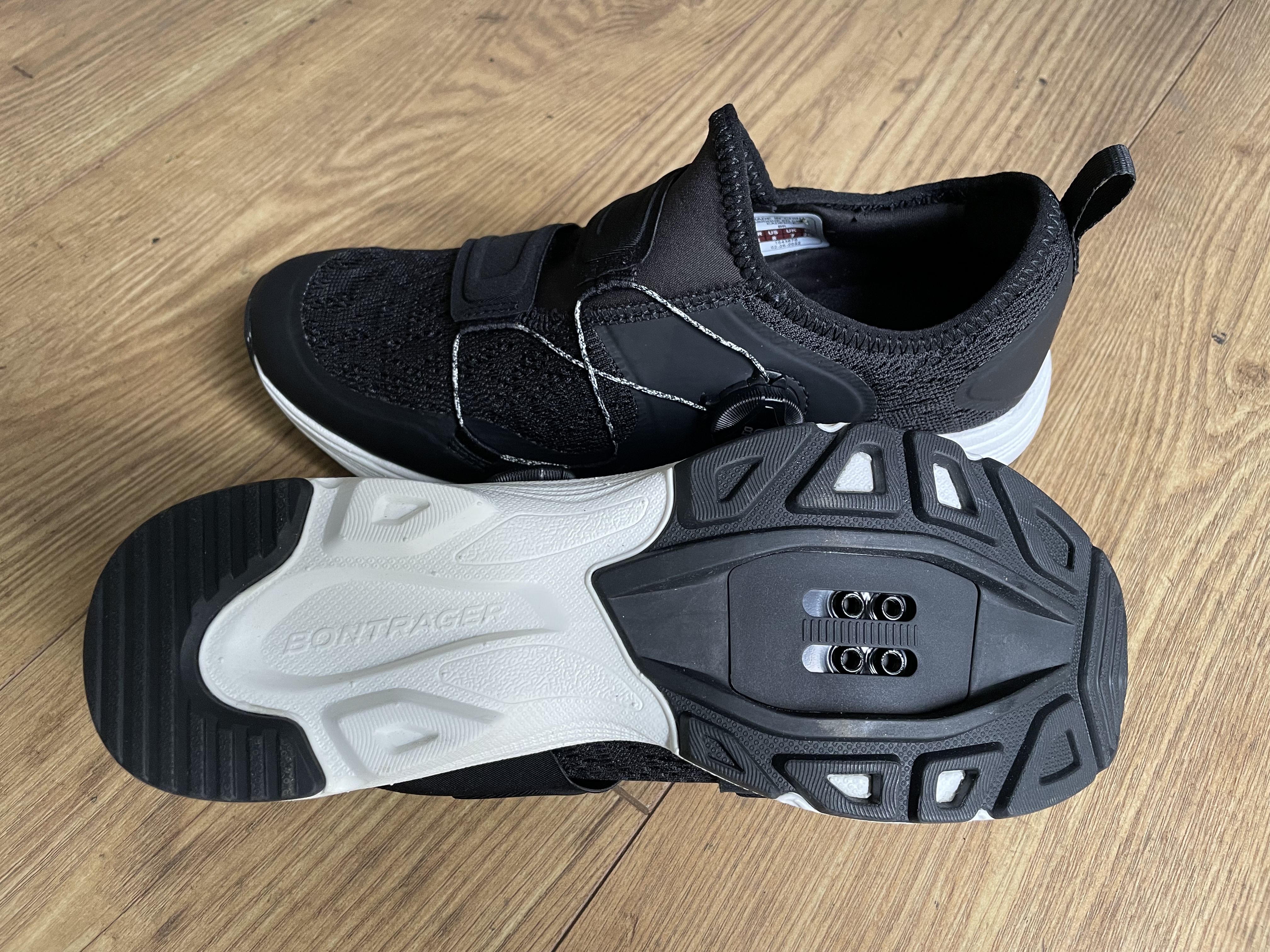
5. Bontrager Cadence Indoor Cycling Shoes
Our expert review:
Specifications
Reasons to buy
Reasons to avoid
The Bontrager Cadence's stand-out feature is how much it looks like a normal lightweight trainer. It has a thick, grippy, rubberized sole and soft, sock-like upper. The recessed two-bolt cleat maximises the sole's grip when off the bike, and there is plenty of flex for walking.
On the bike, Cadence shoes belied their trainer styling. While flexible, the sole was still stiff enough to provide me with a decent power transfer to the pedals, and the BOA closure retention system did an excellent job of holding my foot snuggly in the shoe. The only real restriction was that the thicker sole made it quite tricky to clip in and out of the pedal.
The Bontrager Cadence performed well when used for a little crosstraining post-indoor riding. However, if the cleat is in contact with the floor, the cushioning and grip are compromised, so they don't suit running or aerobic-type classes. But, for most other gym-based exercises, they'll save you swapping over your shoes.
Best for inside and out
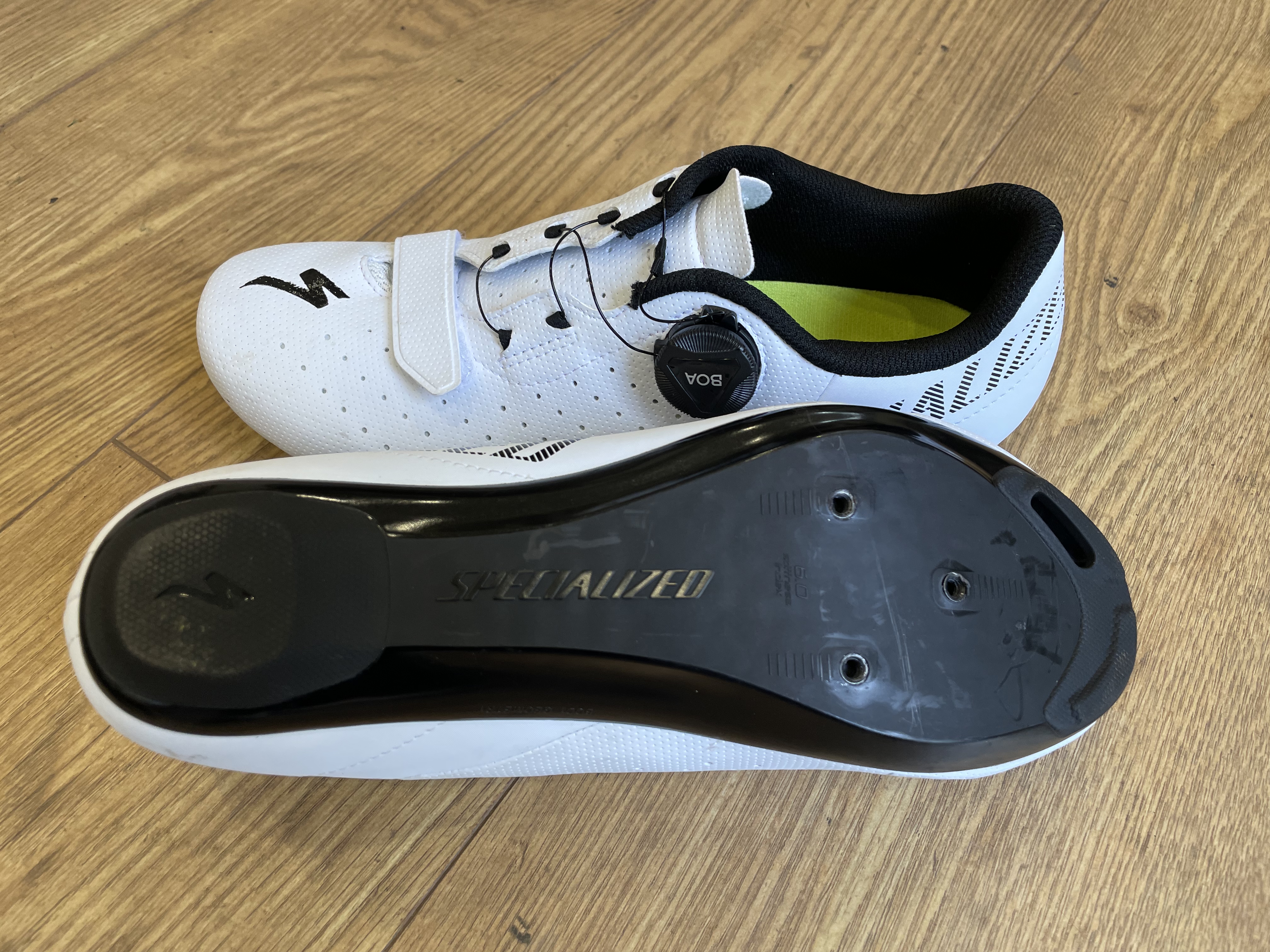
Specialized Torch 1.0 Road Shoes
6. Specialized Torch 1.0
Our expert review:
Specifications
Reasons to buy
Reasons to avoid
In 2021, we reviewed the Torch 1.0 as an outdoor shoe and found it to be an excellent performer for its price.
Given that this was the highest-specced road-specific shoe in our indoor guide, it should come as no surprise that these performed the best on the bike. The stiff sole provides excellent power transfer. I found them comfortable during longer endurance sessions and really felt the power transfer during intense bursts.
I found the upper of the shoes to be one of the most comfortable, with an excellent closure. I felt my foot held firmly but without any hot spots. However, be aware that some might find the toe box on the Torch 1.0 quite roomy, and it's hard to pull the lower Velcro closure tight enough for my narrow feet. Having said that, the main BOA closure does such a good job that it didn't leave my foot moving around excessively.
Whilst the sole isn’t rubberized to the same degree that a dedicated indoor shoe is, there’s a decent amount of grip from the heel material. Combined with the slight flex in the sole, I was able to walk short distances across hard and shiny gym floors without looking like Bambi.
Even when wearing them exclusively indoors. I found that the white upper marked up easily, with the pimply texture catching the dirt and being harder to wipe clean, so it might be worth considering other colours if you like the box fresh look all the time.
How we test the best indoor cycling shoes
Testing the best indoor cycling shoes is not all that different from testing the best cycling shoes or best gravel shoes. However, before we get on to that, I would like to mention the team of dedicated testers behind all of the reviews and guides here at Cycling Weekly.
With extensive backgrounds and experience in cycling, journalism and with a wide range of product knowledge, you can be assured of an unbiased and comprehensive assessment of all the latest and greatest cycling gear.
Let us get to how we test indoor cycling shoes.
The initial step in any shoe test is to evaluate the fit, which includes cleat setup and depends on the tester's foot type. To ensure comprehensive coverage, we have a diverse group of testers with varying foot dimensions, allowing us to gather the most accurate assessment of a shoe for large, small, narrow, and wide feet.
As with a product we have on test here at Cycling Weekly, we then need to invest time in the product. For Indoor cycling shoes, we need to choose the best smart trainer or wheel, or opt for the best smart bike, and put in some static miles.
Testing shoes indoors is simpler than doing so outside because these bikes and devices are equipped with built-in power meters that provide live data during or after a ride, making them ideal for evaluating a shoe's overall performance. For indoor shoes, the primary focus is on power transfer. While comfort and compliance are still important, they are less critical since you'll likely wear the shoes for no more than an hour, and weather and terrain are not factors.
If anything, what is more important than comfort and something we really would only do with gravel shoes is walk around in the shoes on a variety of surfaces. Firstly, we don't want to be damaging any expensive Gym floors or lovingly laid parquet floors. Also, we don't want to be ending up on our posteriors in front of our spin mates or loved ones.
For more information on how Cycling Weekly tackles testing the world's best cycling gear, visit our how we test page.
Meet the tester

Rachel has been writing about and testing gear for over 15 years, in which time she has been both European and UK 24hr Mountain Bike Champion on more than one occasion. What comes with not just winning these events but just participating is getting in serious miles and time on the bike. Given the weather here in the northern hemisphere during the winter months, and with family taking priority Rachel spends a reasonable amount of time training indoors.
How to choose the best indoor cycling shoes

The best indoor cycling shoes
Do I actually need indoor shoes?
Don't tell the PR people, but the truth is, you don't. There is absolutely nothing wrong with wearing your usual riding shoes indoors. But it isn’t just a marketing ploy either - there are a few reasons you might want a pair of dedicated shoes for indoor riding.
1. You don’t already have a pair of bike shoes
For those who focus their riding on their home fitness bike or spin classes at the gym, having a dedicated pair of shoes that have a stiffer sole than the usual trainers and allow you to clip into the pedal can really transform your indoor riding experience - allowing you to get more training benefits from your time on the bike.
2. A clean and dry pair for inside
Even now you're a grown adult, you may still fear the wrath of your mother if you wear your shoes inside. A pair of shoes for riding indoors will remove the risk of spreading mucky, wet shoe prints through the house or gym and keep mum happy too.
3. Your usual shoes are too hot/slippery/stiff/clomp-y/fancy/other to wear indoors
High-end carbon race shoes too slippy on a hard floor, winter commuting shoes to hot, heavy and dirty? Enjoy wearing something that's far more suited to an indoor spin.
What makes a good indoor shoe?
Main features include:
- grippy and walking friendly sole – often a rubberised sole which makes walking across the gym a lot easier than in very stiff and shiny soled shoes
- cool – indoor shoes are much more lightweight and breathable than outdoor ones to keep your feet cooler
- comfortable – as all out stiffness and strength aren’t so important, an indoor shoe can be much more comfortable than a standard riding shoe might be
- cleat options – if you’re buying shoes for your home turbo trainer it’s likely you know what pedal and cleat options you are looking at. If you have a home exercise or indoor smart bike, or want a pair of shoes for a spin bike at the gym, check which pedal system the bike has. The pedals will dictate whether you need two (mountain bike style) or three (road style) bolt shoes, and which cleats you’ll need to buy to attach to your shoes. The pedals on many of these bikes are double-sided so you can use either style of shoe (but you’ll still need to make sure you get the right cleats). If you’re unsure, gym staff or your indoor bike user guide should be able to help you.
A final point on cleats and soles. A two-bolt cleat sits in a recess in the sole. This means the sole can be nice and grippy as the cleat itself makes little or no contact with the floor when you walk, an ideal choice for the gym. Two-bolt cleats also allow for a little more movement ('float') on the pedal which can be more comfortable. On the downside, the smaller cleat can lead to hotspots on the sole of your foot and have a less power transfer than a bigger cleat.
Three-bolt cleats are the opposite. They are prominent on the sole so are much slippier to walk in but are less likely to cause you hotspots and have better power transfer to the pedals. Although there is generally less float in a three-bolt cleat different options are available to improve comfort.
Frequently asked questions about indoor cycling shoes
What happens if I wear my indoor shoes outside?
We promise the world will not end if you occasionally wear your indoor-specific shoes outside. But much like wearing your slippers outside, an indoor pair of shoes won’t offer as much protection as those designed for outdoor use. Most likely this means that your feet will likely end up colder and wetter than in outdoor shoes and the shoes themselves will wear much quicker. If you think you might want to ride outdoors in your shoes as well as inside, a lighter weight set of standard shoes is probably a better option than a dedicated indoor set. Just make sure you clean them before trekking through the house.
Can I use running shoes for indoor cycling?
Of course, you can use almost any sports shoe/trainer for your fitness class or at-home spin session; however, it is probably not the best option. Running shoes and trainers tend to be very flexible and have a big focus on compliance and comfort, which doesn't always translate into an efficient shoe.
While these attributes are fantastic for running, for cycling, it will mean you are losing power and not getting the most from your workout. If you prefer not to invest in cycling shoes and are looking for something more versatile, consider a cross-training shoe or a shoe designed for a dynamic and fast-paced sport like basketball or tennis, which typically features slightly stiff and more supportive designs.
What shoes should I wear for a spin class?
As I mentioned above, ideally, even a basic cycling shoe will make a big difference to your efficiency on one of the best exercise bikes or best smart bikes. There are ways around having to invest in cycling shoes, espcially if you don't ride clipped on outside.
The obvious answer is to consider the best flat pedal shoes, which work well with the best flat pedals and offer considerably stiffer and more efficient performance than regular trainers.
If you need something more versatile than cycling shoes, a cross-training shoe could be a good alternative as it allows you to use it across several fitness disciplines and is ideal for cross-fit, where exercise bikes feature regularly.
Are indoor shoes the same as outside cycling shoes?
Very loosely, yes! The principles of their design, the shoes last used, and the materials all have a wide crossover between indoor and outdoor shoes: the way these materials are used and the results in shoes that offer two very different experiences.
The most significant difference is really in the need for additional comfort and compliance with outdoor shoes, which doesn't sacrifice performance. Still, it is a focus that spin shoes just don't need to consider so heavily.
The latest race content, interviews, features, reviews and expert buying guides, direct to your inbox!
Rachel has been writing about and reviewing bike tech for the last 15 years. Cynical by nature, Rachel never really trusts the marketing hype and prefers to give products a mighty good testing before deciding whether they're worth buying or not.
Rachel's first riding love is mountain biking where she's been European and UK 24hr Champion on more than one occasion. She's not just confined to the trails though and regularly rides - and occasionally races - on gravel and road too.